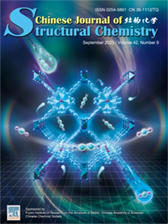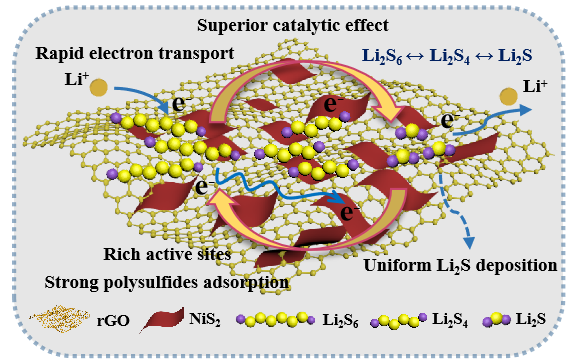
Cover Picture
Metal-ion-tuned metal-organic frameworks for C2H2/CO2 separation
Meng Sun, Hongyan Liu, Xiaokang Wang, Xinlei Yang, Fei Gao, Deyu Xie, Weidong Fan*, Yinfeng Han*, Ben Xu, Daofeng Sun Submit a Manuscript
Metal-ion-tuned metal-organic frameworks for C2H2/CO2 separation
Meng Sun, Hongyan Liu, Xiaokang Wang, Xinlei Yang, Fei Gao, Deyu Xie, Weidong Fan*, Yinfeng Han*, Ben Xu, Daofeng Sun Submit a Manuscript
Structural and chemical engineering of metal-organic framework-derived nickel disulfide nanosheets as the compacted cathode matrix for lithium-sulfur batteries
Qi Zhang, Wenxiang Shen, Pengyue Li, Jinshang Song, Lingzhi Zhu*, Enshan Han, Ruihu Wang, Xiaoju Li*
Chin. J. Struct. Chem., 2023, 42: 100134. DOI: 10.1016/j.cjsc.2023.100134
September 15, 2023
Lithium-sulfur batteries; Metal-organic frameworks; Nanosheets; Nickel disulfide; Shuttling effect
ABSTRACT
Lithium-sulfur (Li–S) batteries are recognized as promising high-energy-density storage systems. It is crucial to develop the compacted sulfur cathodes with high sulfur content and high sulfur loading for practical applications. The metal-containing nanosheets are promising cathode matrix to mediate the accompanying problems, such as low sulfur utilization, unavoidable polysulfides shuttling and poor rate performance. Herein, we develop Ni-MOF-based strategy to fabricate nickel disulfide nanosheets on the reduced graphene oxide surface (NSG). Benefiting from nanosheets structure, strong polysulfides affinity, high electronic conductivity and superior electrocatalytic effect of NSG heterostructure, the resultant electrode exhibits high electrochemical performance with 0.021% capacity decay per cycle in 1000 cycles. Remarkably, the electrode with 88 wt% sulfur content and 5.9 mg cm−2 sulfur loading delivers reversible capacity of 945 mA h g−1, areal capacity of 6.1 mA h cm−2 and volumetric capacity of 997 mA h cm−3 at 0.5 C, which is comparable with the state-of-the-art those in the reported energy storage systems. This work provides methodology guidance for the development of cathode matrix to achieve high-energy-density and long-life Li–S batteries.







